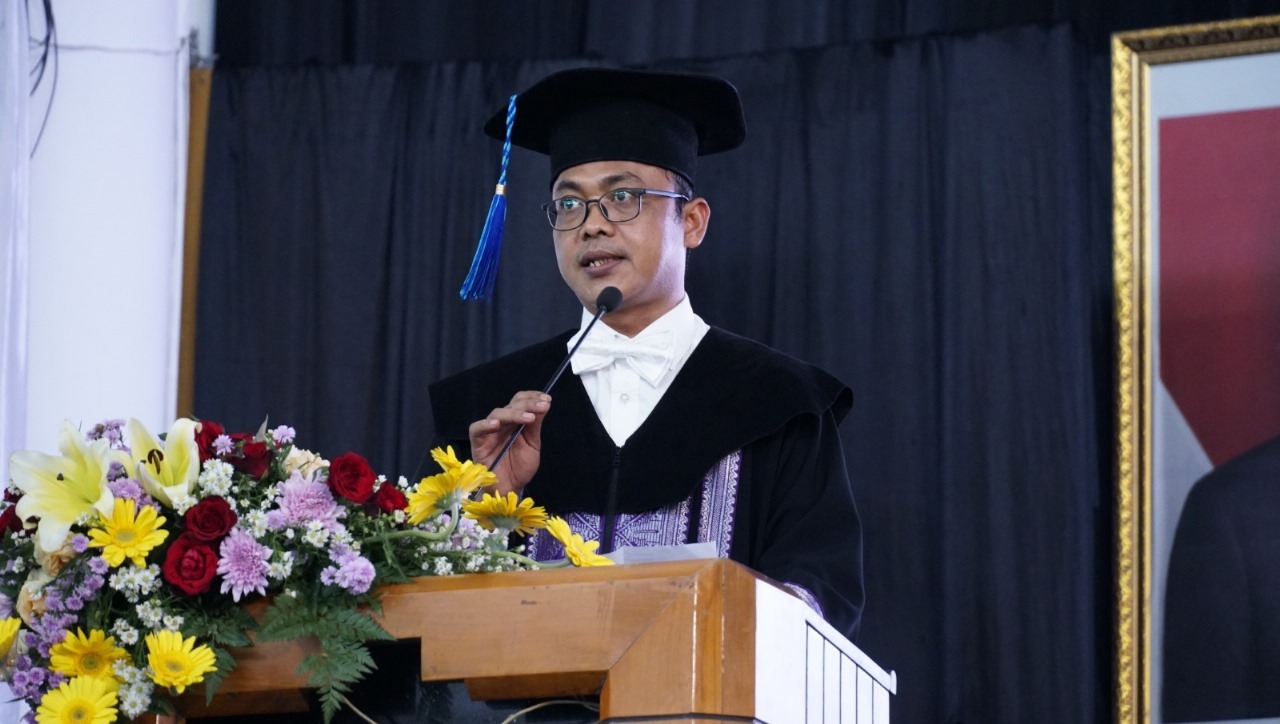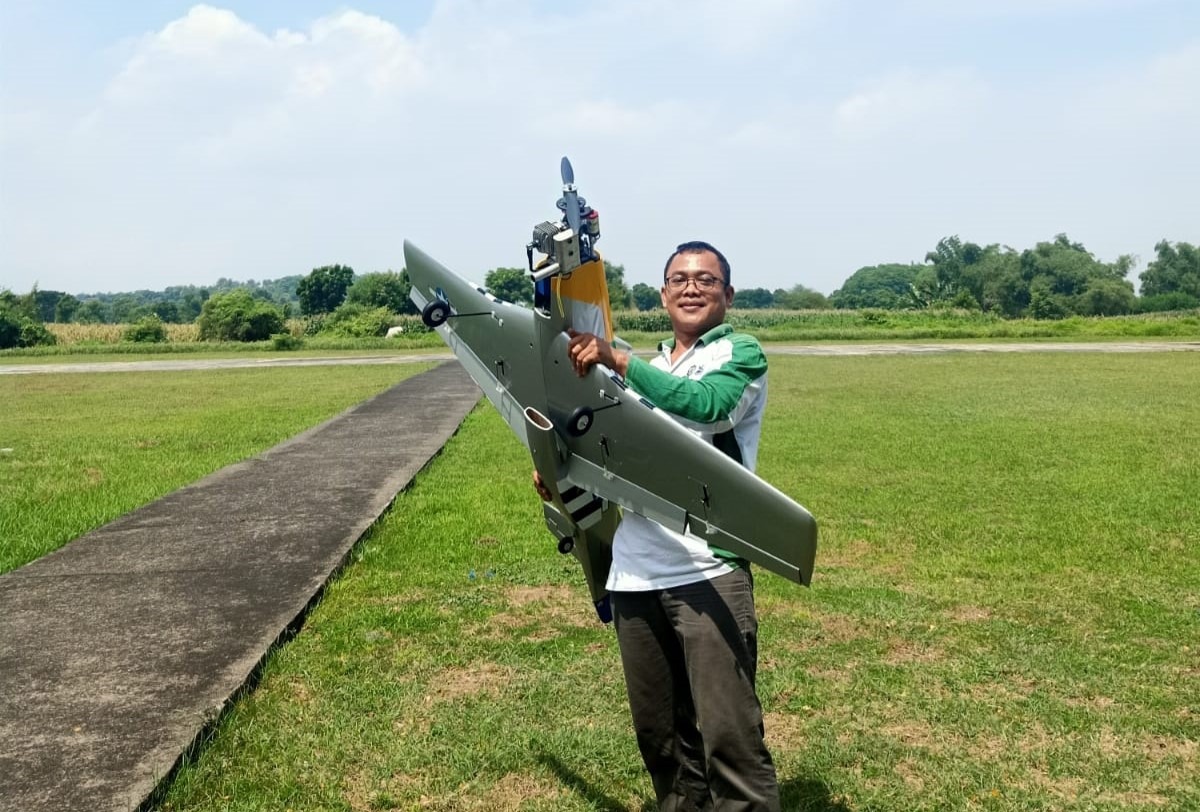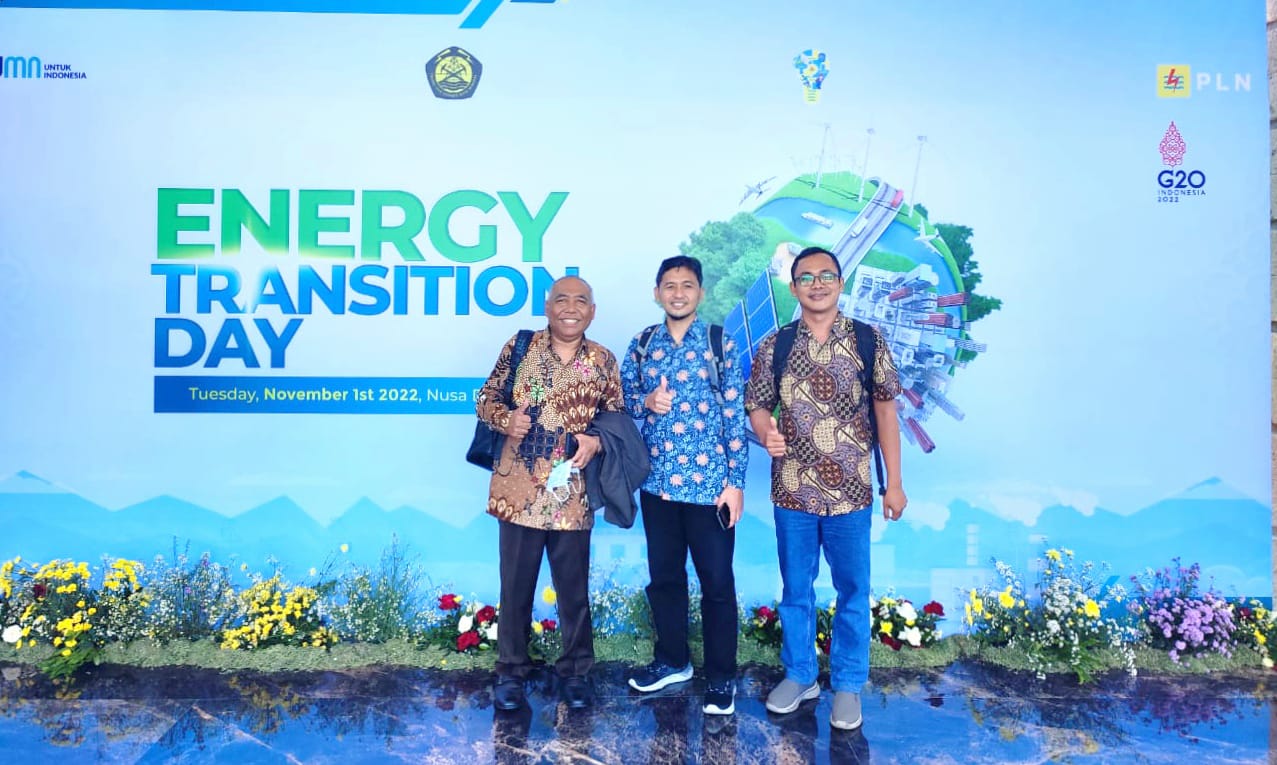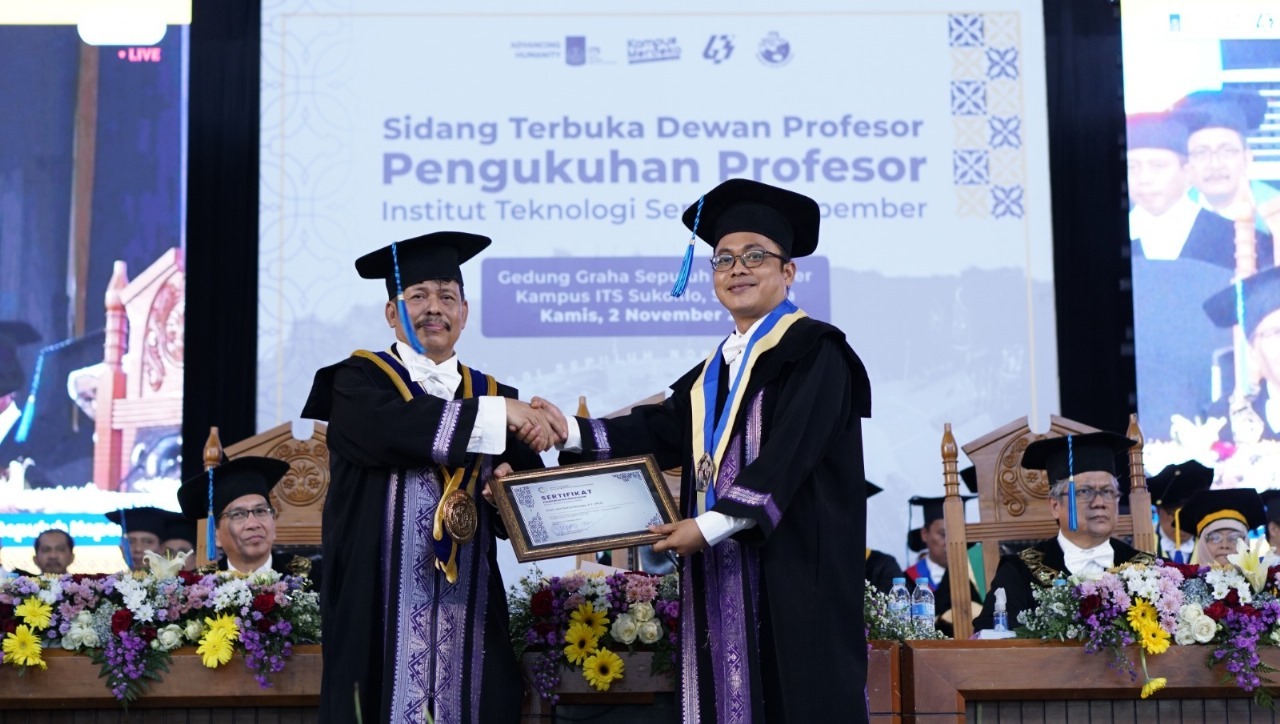Supporting the Development of Electric Motors, ITS Professor Encourages Integration of AI Technology

Prof Heri Suryoatmojo ST MT PhD when presenting his scientific oration entitled Benefits and Challenges of AI in Modern Electric Vehicle Systems
ITS Campus, ITS News – The development of electric vehicles (EV) is increasing sharply in Indonesia and the government’s target to reduce air pollution has encouraged the development of EV technology in society. Based on this, one of the Professors from the Institut Teknologi Sepuluh Nopember (ITS) Prof Heri Suryoatmojo ST MT PhD developed research on the use and challenges of Artificial Intelligence (AI) in modern electric vehicle systems.
According to Heri, artificial intelligence plays an important role in the development of electric vehicle technology, which is increasing sharply in Indonesia. Currently, research is increasingly focused on electric vehicles in terms of control, speed, safety, and testing. These complex problems should be solved using AI. “For this reason, research is needed to optimize electric vehicles by combining existing technology such as AI optimization,” he explained.
Currently, Heri, the promotion of a green campaign in the world that prioritizes electric vehicles is encouraging us to prioritize the development of modern electric vehicles. Current technology adopts driving control. With AI, vehicles will drive autonomously without touch. When on a quiet street, code control mode can be activated according to our wishes. “Drivers will be more comfortable because it doesn’t take up too much focus due to AI assistance. “From a safety perspective, it can also identify distances and road bodies,” he explained.
The man born in 1980 explained that Brushless Direct Current (BLDC) motors have an important role in the development of electric vehicles. BLDC motors are often used as the main drive for electric vehicles because they have high efficiency, high torque, wide speed range, and low maintenance.

Actively involved in developing the ITS Bayucaraka team, Prof Heri Suryoatmojo ST MT PhD has the pleasure of developing unmanned autonomous vehicles
However, said Heri, the BLDC motor must be controlled to get the desired values, such as speed, torque, and position. “Torque is an important parameter for moving a vehicle,” said Heri.
Apart from that, the speed of the BLDC motor also needs to be controlled to obtain the desired acceleration or minimize slippage in the traction control. In this case, the use of traction control on the car becomes responsive but can optimize energy use to a minimum. BLDC motor speed control was developed using the Adaptive Neuro Fuzzy Inference System (ANFIS) method, which is a fuzzy system that has a learning mechanism.
In a scientific novelty, the doctoral alumnus of Kumamoto University, Japan explained that the design of a BLDC motor speed control system uses MATLAB Simulink software. The designed system consists of several blocks including DC Inverter and Supply, BLDC Motor, Decoder, PWM Generator, and Switching Logic. “The actual speed of the BLDC motor will be compared with the reference speed to obtain errors and changes in error values,” explained the 182nd ITS professor.

Prof Heri Suryoatmojo ST PhD (right) while attending the international seminar The Energy Transition Day in Bali
Furthermore, according to Heri, error changes are obtained by carrying out differential operations on the error signal. In this case, the error and error change will be the input values of the ANFIS and Fuzzy-PID controllers. The PWM signal will be connected by AND with the gating signal produced by the switching logic block. The speed of a BLDC motor depends on the amount of voltage applied to the motor.
The ANFIS controller structure itself has input, namely errors and error changes, and consists of three sub-controllers which will determine the duty cycle of the PWM signal. The response from Fuzzy-PID is then modified to train the ANFIS controller to get a better system response.
The first step in designing an ANFIS controller is to obtain input data pairs. “The ANFIS hybrid learning algorithm is used to train parameters and consists of a combination of the back-propagation algorithm and Recursive Least Square Estimation (RLSE),” explained the Professor from the ITS Department of Electrical Engineering.

Inauguration of Prof Heri Suryoatmojo ST MT PhD (right) as ITS’s 182nd Professor in the field of Electrical Drive Systems Science
Considering the usefulness of knowledge, it is hoped that Heri’s research will become a learning reference for students and be able to bring ITS branding to electric vehicle technology. Heri’s research simulation designed a control system so that transient currents arising from speed changes did not exceed 500 Ampere as the current limit given to the BLDC motor. This is because the voltage between the stator phase windings during the starting period is cut so that the starting current becomes small.
Heri, who completed his PhD or doctoral program at the age of 29, really loves the world of vehicles. “Moreover, my hobby since I was little was working with vehicles, which made me enjoy studying technology, especially autonomous vehicles,” said the professor who was born in Magetan, on June 3, 1980.
Lastly, Heri hopes that his inauguration as a professor can encourage ITS to continue to work well on the national and international levels. “Hopefully I can also bring my team in Bayucaraka (ITS flying robot team, ed) to take part at the international level and develop the technology further,” he said. (ITS Public Relations)
Reporter: Silvita Pramadani
Related News
-
Gerigi ITS 2024, a Spark of Enthusiasm for Freshmen Contributions
ITS Campus, ITS News — Institut Teknologi Sepuluh Nopember (ITS) again held Generasi Integralistik (Gerigi) as a place to
December 06, 2023 18:12 -
ITS Team Wins the Sustainable Bridge Competition 2024 Event
ITS Campus, ITS News — Students of Institut Teknologi Sepuluh Nopember (ITS) again made brilliant achievements in the construction field.
December 06, 2023 18:12 -
Supports Learning, FKK ITS Establishes Technology Display and Digital Cadaver
ITS Campus, ITS News — The commitment of Institut Teknologi Sepuluh Nopember (ITS) to continuously improve the quality of
December 06, 2023 18:12 -
ITS, QUT, and UTS Collaborate to Enhance Flood Resilience
ITS Campus, ITS News — Institut Teknologi Sepuluh Nopember (ITS), together with Queensland University of Technology (QUT) and the
December 06, 2023 18:12
